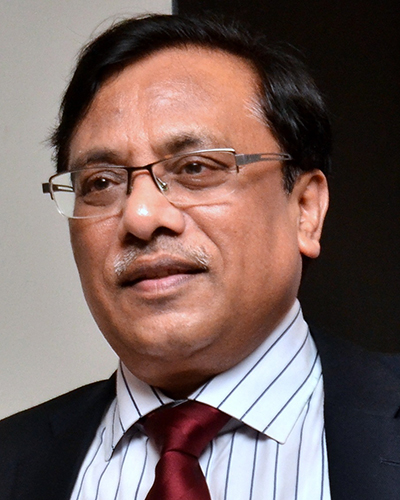Dastardly Design
More recently, Albert Watanabe’s immediate subordinate, Ramesh Pillai, resigned because his wife has insisted on immigrating to Canada, where her parents had retired. This resignation created a vacuum that put incredible pressure and workload on Watanabe. As the regional country manager, he was responsible for the profitability and growth of the Kuala Lumpur office. However, he was also the regional director in charge of offices in Singapore, Indonesia and Malaysia; his new workload was causing him too much stress and he needed a right-hand man to independently run the Malaysian operation with minimal supervision.
A lunch break followed Alex Gomez’s presentation, and Watanabe did not want to lose his opportunity to meet this dynamic speaker because, if the plan worked out, Watanabe hoped to hire Gomez and finally be relieved of his gargantuan workload.
Perfect Fit
CCL was possibly the best-suited firm for Gomez in his mind, especially because the salary offered was close to double what his previous employer had been paying him. For Watanabe – who was looking for a young, dynamic, self-driven person familiar with the Malaysian market and with expertise in structural design – Gomez had perfectly matched skills and experience, so Albert strongly recommended him for the director position in the Malaysian office and got approval from Hong Kong, pending a back- ground check – which was never conducted?
After only eight months at CCL, Alex had demonstrated his uncanny skill in handling his clients and subordinates and showed the innovative creativity needed for structural designing. Watanabe did not feel it was right to make such a talented person undergo a background check and, thus, the first fatal mistake was made. But over the next five years, Gomez repeatedly proved his skills, and he was highly looked upon by Watanabe and Edward Lim himself. Gomez was given a big bonus in appreciation of his design engineering effort for a prestigious client, and everything seemed to be going his way. The business was flourishing, and his subordinates hardly had the courage to go against his instructions; they knew he was connected with the higher authorities and that his orders were final. Watanabe’s visits to the Kuala Lumpur office were mostly confined to meetings with major clients and, taking advantage of this, Gomez was running the office with absolute authority. In a nutshell, with the complete trust of his seniors on one hand, and the unprecedented level of control on the other, Gomez was fully armed.
Lunchtime Alarm
Although Tan had access to his boss’s office, he did not answer the call because he felt it would have been a breach of privacy. But after half an hour, the phone rang again. Presuming Gomez might have left his cell phone behind and there is an important
“Sir, my name is Rayan, Mr. Gomez’s subordinate, and he is no in the office at the moment. May I have your contact number and ask him to call you back?”
Wong, taken by surprise, said that Gomez had his number and to just tell him to return the call as soon as he got back. After that, as afar as Tan could tell, the phone was slammed back onto the receiver. As a matter of habit, when he was talking, Rayan noticed the caller ID on the phone. He wrote the number in his diary and return to his cubicle with some unease because the caller appeared to be an individual requiring a new design to complete the renovation of his home. CCL dealt only with contractors and builders, an apparently the caller was neither. To understand this mystery, Tan went through the list of active clients but did not find any by the name of Michael Wong. Despite this anomaly, Tan did not have to time to delve into the matter further – he had pending designs to finish for Gomez. He engrossed himself in the project and left the issue to be handled by Alex, who returned at 3.00 PM sharp and was visibly upset. He headed straight for his office and, on the way, told Tan to see him there. Gomez had a received a call on his cell phone from Michael Wong who mentioned his conversation with Rayan.
Gomez jumped into an explanation to Tan about how a crazy customer was on his tail and kept e-mailing him to get some work done despite Gomez’s numerous assertions that CCL did not work with individuals unless they were building contractors or engineers. This explanation further bewildered Tan because Gomez volunteered it, which was against his basic nature as an authoritarian who hardly interacted with his subordinates. Tan was now suspicious.
Calling in the Big Guns
Michael told Philip he could pick up a copy from the reception desk at around 5:00 PM. Philip did so and passed it on to Rayan. Tan opened the envelope and was astounded to see that Gomez had stamped the design plans under CCL’s name. This was most definitely against CCL’s policies. “What am I going to do with this? Who should I contact? Who should I discuss this matter with? Would the cost of making this information known be too high for me? These questions left him utterly perplexed and unsettled. It was a stressful night for Rayan; he still felt loyal to his boss.
The following morning, mustering up his courage, Rayan called Watanabe on his personal cell phone and said he needed to discuss something urgent and confidential. Watanabe, who was in Singapore, asked Rayan to wait until Gomez returned from Indonesia; Watanabe said Gomez would be the right person for Rayan to speak with. Rayan took a deep breath and managed to utter, “Sir, this matter involves possible wrongdoing by Mr. Gomez, and I feel that his conduct could be damaging for CCL.” Watanabe’s first reaction was of disbelief because he hardly knew Rayan, apart from the fact that he had been Gomez’s subordinate for the past four years. Nonetheless, he could not ignore Tan. Watanabe asked his secretary to book the earliest available flight to Kuala Lumpur and kept his departure confidential. By 1:30 the same afternoon, Watanabe landed in Kuala Lumpur.
As instructed, Rayan was waiting for Watanabe at the airport with documents of CCL’s current and past customers. These confirmed that Michael Wong was not on the customer list. Watanabe alerted his boss, Edward Lim, who instructed Watanabe to probe the matter thoroughly and to establish the facts. In the meantime, Edward’s office contacted Alex and asked him to visit the head office after his seminar before going back to Kuala Lumpur. This was designed to keep Gomez occupied and buy time for Watanabe to get some preliminary work done before launching a full-scale investigation.
You Can’t Hide
Because Gomez was dealing with outsiders, we assumed he would be communicating with them through the Internet and reasoned that we would find evidence thereof through the forensic review. Other than that, we hoped to find deleted files on the laptop that could explain Gomez’s activity. Our first step was to create a duplicate image of the hard drives to review from our own office.
Based on information gathered during our search, interviews with Rayan and our understanding of the type of the case, we developed a focused search strategy and performed keyword searches. It was not a very complicated investigation because Gomez was not a computer expert, and we knew what evidence we were looking for. Once Samir and I reduced the search space by identifying and filtering known and suspect files through signature analyses, we turned our attention to searching for specific keywords. The words we searched for included: design architect, civil construction, invoice, payment, consultation, fee, architectural design, building, house, structure, commercial complex, villas, bungalow, living area, interiors.
File signatures were examined to evaluate whether the user attempted to hide files in plain sight by changing file extensions. We compared the file extension with its corresponding signature; since thy matched, we were assured that no effect was made to obscure the file type.
As a part of our routine analysis, Samir and I also searched e-mail files; these leave traces on computers that provide vital information and, in this case, they revealed the modus operandi. We found traces of Gomez accessing his private e-mail service, Gmail. We also saw spreadsheet attachments to e-mails that suggested that significant amounts of data had been uploaded and downloaded through Gmail on various dates. We then conducted a series of experiments to determine the names associate with each message in the Gmail account and the result was astonishing. Numerous spreadsheets pertaining to CCL’s debtor’s ledger and other financial accounts were uploaded and downloaded on various occasions in the last three years. The resulting metadata analysis revealed the author as GMZ, which obviously indicated Alex Gomez. This was further confirmed when we discovered the laptop, and its software programs were registered to GMZ. We recovered deleted invoices that were created by the same author. These documents were bookmarked and copied to our evidence folder, as was the metadata analysis. We also bookmarked several Web page entries relating to payments to an account at Bank of Commerce.
Gee, Look at This Gmail!
- At least 37 different individual customers were serviced by Gomez in the last 41 months.
- The customers were invoiced through Gomez’s Gmail account but payments were received in the name of CCL.
- A parallel spreadsheet with detailed accounting information above various customers of CCL was maintained by Alex. Some of these customers’ ledgers were affixed with the code “GMZ” in front of their name.
- A comparison of the ledgers with the GMZ code confirmed that these names did not appear in CCL’s books of accounts.
- To hide the transactions, the accounts of the GMZ customers were stored and maintained on Gmail in the name of customergone@gmail.com
- The invoices we retrieved were created by Gomez or through his laptop; the author of the invoices was “alexgmz”.
- Gomez e-mailed his individual client’s instructions to transfer payments online to a bank account at Bank of Commerce and attached invoices supposedly from CCL.






 BR 18840
BR 18840  VN 13465
VN 13465  AR 2994
AR 2994  CN 1639
CN 1639  US 1474
US 1474  EC 1246
EC 1246  SG 764
SG 764  RU 719
RU 719 



